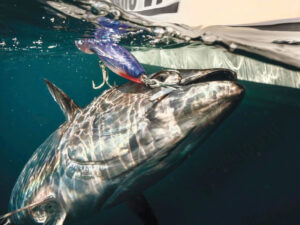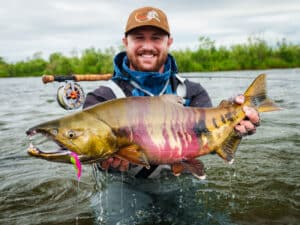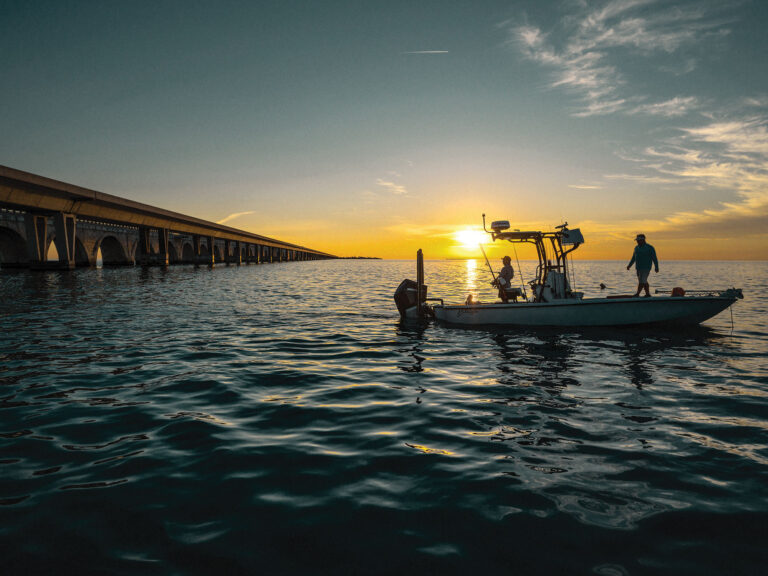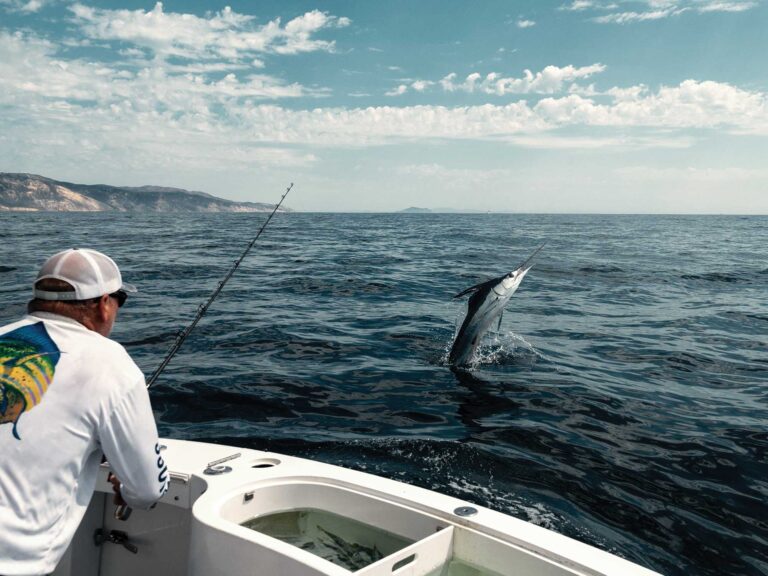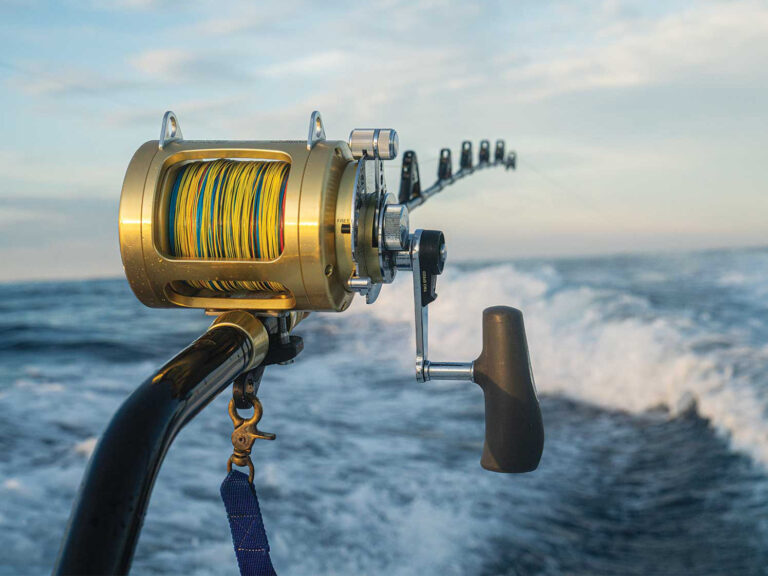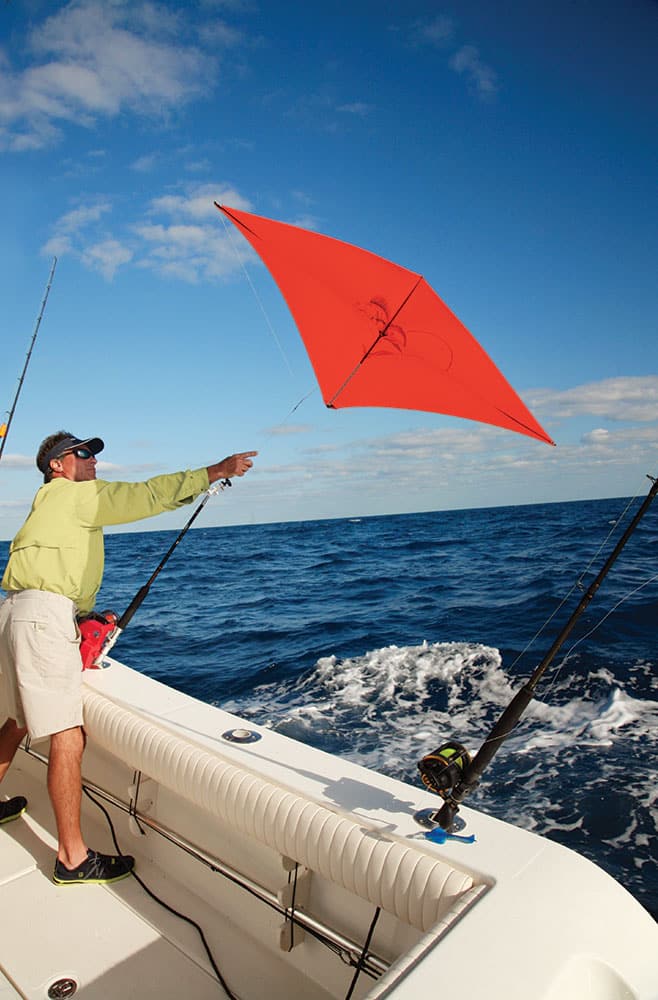
The premier method for targeting sailfish is kite-fishing with live bait. A kite spreads baits out over a greater swath of water and holds them at the surface, where their swimming and thrashing dispatches distress vibrations that ring the dinner bell. And because the baits dangle from the kite, terminal hardware and leaders remain above the surface, out of sight. If you fly two kites and are using a sea anchor to keep the bow into the seas or slow your drift, rig the kites so one flies more to port side and the other to starboard. That’s accomplished by adding split shots to the opposite upper or lower corners of each kite.
Hardy baits like goggle-eyes, blue runners, threadfin herring and mullet are the most productive for kite-fishing. Bridling the baits is recommended, and someone should monitor each kite to keep the baits at the surface and watch for sailfish.
When a sail rises on a kite bait, reel the bait to the surface so the leader is out of the water. That reduces the risk of the fish becoming bill wrapped when it eats. Then snap the line out of the release clip, aim the rod tip toward the sailfish and follow it as you take up slack; the rod should point directly at the fish so when you come tight and line races off the reel, the pressure sets the circle hook. Keep as many lines in the water as possible during the fight for possible multiple hookups.
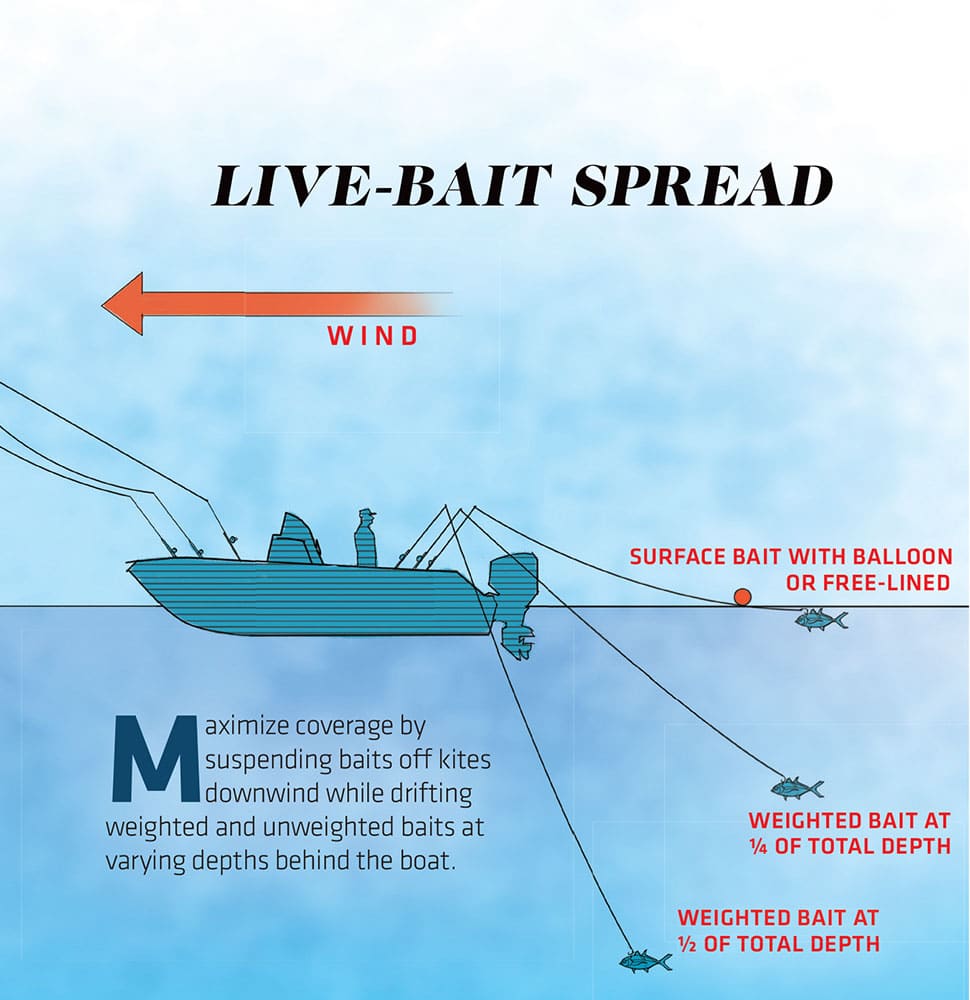
While flying kites to present baits downwind of the boat, another proven strategy can also be orchestrated. On the upwind side of a drifting boat, or off the transom when employing a sea anchor, dispatch a couple of surface baits (possibly one with a balloon float) and a couple of baits rigged with enough weight to keep one down at a quarter of the depth and another at half the depth.

Ballyhoo populations peak in winter, and sailfish are known to corral these baitfish over shallow patch reefs and right off the beach in as little as 10 feet of water. That happens often in the Florida Keys, where sight-fishing for sails amid ballyhoo showers is a classic scenario. Fishing ballyhoo showers is generally best when an early morning incoming tide pushes clean water and hordes of ballyhoo over the patch reefs. At a low angle, the sun illuminates a greater area of the water and the bottom, so the same holds true late in the afternoon. A north wind seems to stack the ballyhoo and trigger aggressive feeding. Live ballyhoo are a must for the task. You can chum them up with frozen chum over patch reefs, then catch them with a cast net or gold hooks.
Once rigged and ready, idle about the patches looking for ballyhoo showers. Sporadic bursts of ballyhoo usually mean mackerel and barracuda, but when ballyhoo shower in a uniform direction, like flying fish, that’s the mark of sailfish. Race to the spot, trying to keep the sun and wind at your back, and look for the long, dark shadows of sailfish. Once you locate the sails, cast a few feet in front of them.

Trolling dredges and teasers in lieu of live-baiting is an excellent tactic. Seasoned game-boat crews make an art of fabricating tantalizing dredges with dozens of fresh mullet and ballyhoo, a time-consuming undertaking. However, variations on that theme also bode well. For instance, artificial dredge kits by Strike Point and Strip Teaser offer clear dredge strips garnished with as many as 156 reflective baitfish decals that resemble a huge school of bait. The baitfish-school illusion can be enhanced by pulling daisy chains of artificial squid or mullet from the outriggers
A dredge should be set back and deep, but still remain visible. A clear view is essential to spotting and baiting an interested sailfish. I deploy a pair of dredges, one cleated off each transom corner, along with daisy-chain teasers positioned just outside and in front of each dredge, in clean water. I run my teaser lines through my farthest outrigger eyes.
Dredges function best at slower trolling speeds, around 5 to 7 mph. Use the same pitch-bait outfits you would use when targeting sails around showering ballyhoo, matching the size of the bait to that of the replicas on the dredge. When a fish rises on a surface teaser, wind in that teaser and pitch a bait alongside it. Then get the pitch bait skipping and position it in front of the sailfish. The goal is to coax the sailfish off the teaser and onto the pitch bait.
With a fish on the dredge, pitch a bait back and free-spool it, keeping the rod tip low to the water. The bait should sink just ahead of the fish, appearing injured. You’ll sometimes have to tease the fish by keeping the bait in front of it, imparting taunting actions like it’s trying to get away.
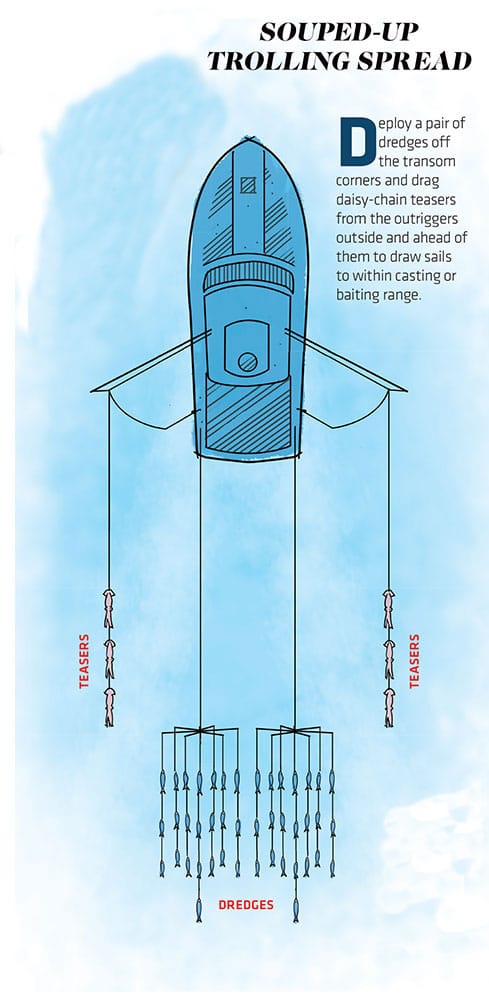
Die-hard natural bait trollers can use the same setup in conjunction with a spread of skipping and swimming ballyhoo rigged on circle hooks and 50-pound fluorocarbon leaders. Position the flat-line baits at the surface, 10 or so feet behind the dredges, or to the outside if using the short rigger clips. The outrigger baits should be staggered between 100 and 300 feet behind the closest baits, with any center rigger bait some 400 to 500 feet back.
Put the recommended tactics into practice, focusing on bait-rich pockets, rips, color changes, wrecks or other notable structure in 90 to 300 feet of water. When you locate an active zone, shorten your drifts accordingly or just slow-troll. Remember, the broader the area your baits cover, the more likely that sailfish will find them.

Tackle Box
Rods: 20- to 30-pound conventional or spinning for kite-fishing and trolling; 12- to 20-pound spinning for instant drop-backs and casting to fish feeding or cruising on the surface
Reels: 12- to 30-pound class, spinning or conventional, to match rods
Line: 12- to 30-pound monofilament line and 15-foot wind-on leader of 40- to 50-pound fluorocarbon
Bait: Hardy live baits, like goggle-eyes, blue runners, threadfin herring and mullet are best for kite-fishing; bridling them is recommended. Opt for rigged live ballyhoo to coax fish off dredges and teasers or if fishing ballyhoo showers.
Hooks: Light wire, in-line circle hooks, 4/0 to 7/0, depending on the size of the bait




